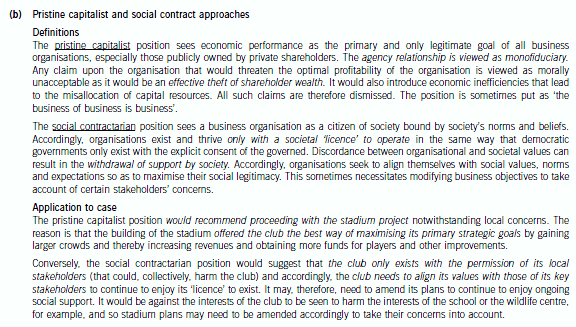注意查看!2020年北京市ACCA考试报名时间
发布时间:2020-09-03
ACCA在国内称为“国际注册会计师”,ACCA资格被认为是“国际财会界的通行证”。北京市的考生请注意,2020年ACCA考试报名时间已经公布了,51题库考试学习网为大家带来了报名相关事宜,让我们一起来看看吧!
一、报名时间及费用缴纳:
|
2020年12月ACCA考试报名时间、考试费用- |
|||
|
报名周期 |
报名(截止)日期 |
考试科目 |
考试费用 |
|
提前报名截止 |
2020年8月10日 |
|
|
|
F4-F9 |
123英镑 |
||
|
Strategic Business Leader |
210英镑 |
||
|
Strategic Business Reporting |
164英镑 |
||
|
P4-P7(4选2) |
164英镑 |
||
|
常规报名截止 |
2020年11月2日 |
|
|
|
F4-F9 |
130英镑 |
||
|
Strategic Business Leader |
222英镑 |
||
|
Strategic Business Reporting |
173英镑 |
||
|
P4-P7(4选2) |
173英镑 |
||
|
后期报名截止 |
2020年11月9日 |
|
|
|
F4-F9 |
332英镑 |
||
|
Strategic Business Leader |
358英镑 |
||
|
Strategic Business Reporting |
358英镑 |
||
|
P4-P7(4选2) |
358英镑 |
||
二、ACCA报考条件:
(一)凡具有教育部承认的大专以上学历,即可报名成为ACCA的正式学员;
(二)教育部认可的高等院校在校生,顺利完成大一的课程考试,即可报名成为ACCA的正式学员;
(三)未符合(一)、(二)项报名资格的16周岁以上的申请者,也可以先申请参加FIA(Foundations in Accountancy)基础财务资格考试。在完成基础商业会计(FAB)、基础管理会计(FMA)、基础财务会计(FFA)3门课程,并完成ACCA基础职业模块,可获得ACCA商业会计师资格证书(Diploma in Accounting and Business),资格证书后可豁免ACCAF1-F3三门课程的考试,直接进入技能课程的考试。
三、报名规则:
1.申请参加ACCA考试者,必须先注册成为ACCA学员。
2.学员必须按考试大纲设置的先后次序报考,即应用知识模块,应用技能模块,战略专业模块。同一个模块里的课程可以选择任意顺序报考,但建议在同一个模块中也按照课程顺序报考。
3.基础阶段的应用知识模块考试时间为两小时,基础阶段的应用技能模块和战略专业阶段的所有课程考试时间为三小时,及格成绩为50分(百分制)。从2016年起,ACCA实行4个考季,即学员可选择在3、6、9、12月考季在当地考点进行考试。学员每年最多可报考8门不相同的科目。
请注意:中国大陆地区自2018年3月考季开始将取消PM-FM的笔试。
4.基础阶段9门考试不设时限;专业阶段考试年限为7年,从通过第一门战略专业阶段考试之日算起。
5.考试的报名时间不同,考试资费标准就不同(该优惠政策仅限网上报名)。较早报名考试,费用会相对较少。报考时间分为提前报名时段,常规报名时段和后期报名时段。
以上就是今天分享的全部内容了,各位小伙伴根据自己的情况进行查阅,希望本文对各位有所帮助,预祝各位取得满意的成绩,如需了解更多相关内容,请关注51题库考试学习网!
下面小编为大家准备了 ACCA考试 的相关考题,供大家学习参考。
(ii) The recoverability of the deferred tax asset. (4 marks)
(ii) Principal audit procedures – recoverability of deferred tax asset
– Obtain a copy of Bluebell Co’s current tax computation and deferred tax calculations and agree figures to any
relevant tax correspondence and/or underlying accounting records.
– Develop an independent expectation of the estimate to corroborate the reasonableness of management’s estimate.
– Obtain forecasts of profitability and agree that there is sufficient forecast taxable profit available for the losses to be
offset against. Evaluate the assumptions used in the forecast against business understanding. In particular consider
assumptions regarding the growth rate of taxable profit in light of the underlying detrimental trend in profit before
tax.
– Assess the time period it will take to generate sufficient profits to utilise the tax losses. If it is going to take a number
of years to generate such profits, it may be that the recognition of the asset should be restricted.
– Using tax correspondence, verify that there is no restriction on the ability of Bluebell Co to carry the losses forward
and to use the losses against future taxable profits.
Tutorial note: in many tax jurisdictions losses can only be carried forward to be utilised against profits generated
from the same trade. Although in the scenario there is no evidence of such a change in trade, or indeed any kind
of restriction on the use of losses, it is still a valid audit procedure to verify that this is the case
(b) Compare and contrast Gray, Owen and Adams’s ‘pristine capitalist’ position with the ‘social contractarian’
position. Explain how these positions would affect responses to stakeholder concerns in the new stadium
project. (8 marks)

(b) Describe the audit work to be performed in respect of the carrying amount of the following items in the
balance sheet of GVF as at 30 September 2005:
(i) goat herd; (4 marks)
(b) Audit work on carrying amounts
Tutorial note: This part concerns audit work to be undertaken in respect of non-current tangible assets (the production
animals in the goat herd and certain equipment) and inventories (the for-sale animals and cheese). One of the ‘tests’ for
assessing whether or not a point is worthy of a mark will be whether or not the asset to which it relates is apparent. Points
which are so vague that they could apply to ANY non-current asset for ANY entity, rather than those of GVF are unlikely to
attract many marks, if any, at this level.
(i) Goat herd
■ Physical inspection of the number and condition of animals in the herd and confirming, on a test basis, that they
are tagged (or otherwise ‘branded’ as being owned by GVF).
■ Tests of controls on management’s system of identifying and distinguishing held-for-sale animals (inventory) from
the production herd (depreciable non-current assets).
■ Comparison of GVF’s depreciation policies (including useful lives, depreciation methods and residual values) with
those used by other farming entities.
■ ‘Proof in total’, or other reasonableness check, of the depreciation charge for the herd for the year.
■ Observing test counts or total counts of animals held for sale.
■ Comparing carrying amounts of the kids, according to their weight and age, as at 30 September 2005 with their
market values. (These may approximate to actual invoiced selling prices obtained by GVF.)
Tutorial note: Market value of the production herd could also be compared with its carrying amount to assess possible
impairment. However, if value in use appears to be less than market value the herd should be sold rather than used
for production.
声明:本文内容由互联网用户自发贡献自行上传,本网站不拥有所有权,未作人工编辑处理,也不承担相关法律责任。如果您发现有涉嫌版权的内容,欢迎发送邮件至:contact@51tk.com 进行举报,并提供相关证据,工作人员会在5个工作日内联系你,一经查实,本站将立刻删除涉嫌侵权内容。
- 2020-01-09
- 2020-08-13
- 2020-08-14
- 2020-01-09
- 2020-01-10
- 2021-01-22
- 2020-01-10
- 2020-01-08
- 2020-01-09
- 2020-01-10
- 2021-04-04
- 2020-02-27
- 2020-01-10
- 2019-12-29
- 2021-01-13
- 2020-01-10
- 2020-01-08
- 2020-01-10
- 2020-01-10
- 2020-01-10
- 2021-04-24
- 2020-01-08
- 2020-01-09
- 2020-01-10
- 2020-02-27
- 2021-01-13
- 2020-08-13
- 2021-05-23
- 2021-01-13
- 2021-05-07